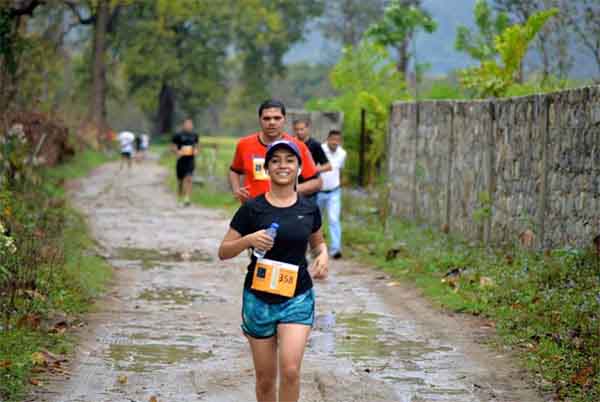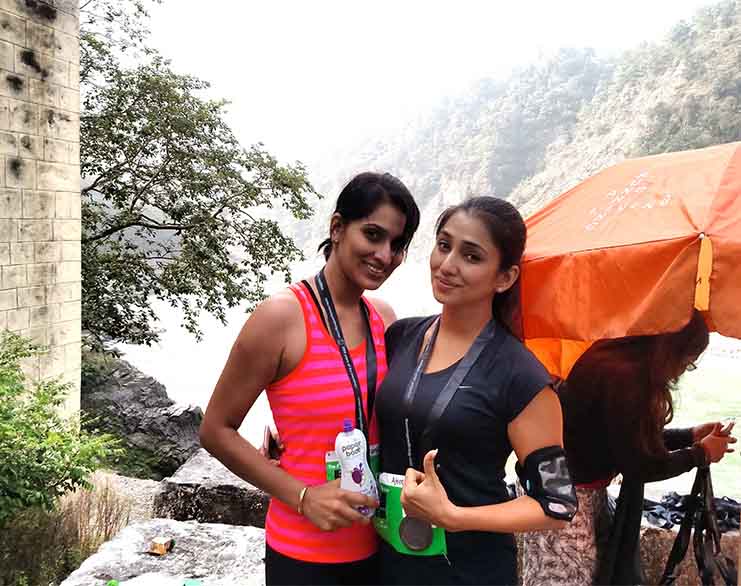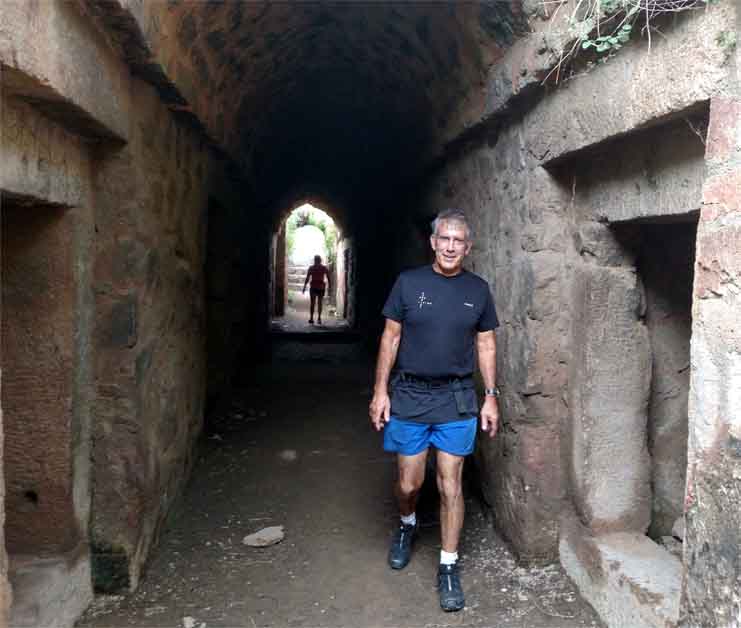Have you ever wanted to sight-see like no other person?
Have you ever explored the cities you visit, or even your own area where you live, like never before?
Have you been on a 'running' picnic with your family and enjoyed the great outdoors and heard the birds chirping in the morning?
Try it.... it can be great fun, although a family picnic in the morning is definitely not the most popular, and does not look very likely to be more frequent than an annual event.
I have run in snow, run in mountains, on the beach, through old cities, through villages and alongside city traffic .... catching stares of people along the way, but each of these providing me with a unique new experience of a place, that I would otherwise never have had.
Equipment required: A 'can do' attitude, running shoes and shorts, T shirt, bottle of water
Danger: Can get addictive and people may think you are crazy
For the more adventurous - try and go for an early morning run in the towns that you travel to, for business or on vacation.The early morning gets you to see places devoid of traffic, and pollution, you get to hear birds chirping and occasionally also catch a beautiful sunrise, apart from seeing buildings and sights, from angles others would never have noticed; keeping you mentally sharp and physically fit, at the same time.. Running and health, work and sight seeing, all going hand in hand.
Once in a while on your runs in some places - it may be good to run with a small stick or baton to ward off the occasional stray dog who wants to get a bit more friendly than you would like it to. I used to be a bit more wary earlier, but now find that if I run with confidence and have something in my hand, I am left alone by even the most adventurous pack of strays. So get started and have some fun.
Getting Started:
 Focus on getting all the thoughts that contribute to inertia, out of your mind…. It’s too hot. It’s raining. It’s too dusty. I’m too old. My knees ache. What will people think when they see me. I can’t run. Too many dogs around. It’s too polluted. There are no parks close by………
Focus on getting all the thoughts that contribute to inertia, out of your mind…. It’s too hot. It’s raining. It’s too dusty. I’m too old. My knees ache. What will people think when they see me. I can’t run. Too many dogs around. It’s too polluted. There are no parks close by………
Dust out your shorts, running shoes and T shirts. Get yourself a water bottle and WEAR your attitude (thats the only one you can’t buy with Mastercard!) But you were born with one.
“With ordinary talent and extraordinary perseverance, all things are attainable.”
Sir Thomas Foxwell Buxton,
British abolitionist
Set yourself a goal – whatever it may be. It’s great! Because it is YOUR goal. Remember, running is personal.
Different running goals make different people tick and you are unique. Some goals could be –
See if you can find someone you know with a similar goal, maybe it’s just to get started, so that you push each other out of the door in the morning. Mornings are the best time to run. You are undisturbed, can plan your day, you know that you can build it in to a routine. Plan for 30-45 minutes of time 3 week days and 2 weekend mornings, or start with just 3 days a week. The important thing is to start! And also get into a routine.
Remember – you are not here to train for a marathon but just to achieve your personal goal. running schedules, look at one that suits you and stick with it, or over time, adjust it and create your own schedule.

- Get started with a check up – and establish your health baseline – weight, medical issues, pains and aches, and anything else. JotMarathon it all down in a diary to enable a check 7 weeks later. Running and health go together. Just see how you progress on both fronts in the next seven weeks.
- Keep a pad where you can jot down notes on how the day’s activity went- it was easy, you were breathless, felt really good, slept well the night before, weather was great, it was warm and humid….
- Remember that you must never push yourself in the initial stages and a good test is to be able to converse with a running partner if you have one, else be able to hum/sing/ talk to yourself without getting out of breath – sounds crazy but it works. Slow down, don’t let your enthusiasm get the better of you.
- Dont use worn out running shoes. Give them away. Your feet are precious even though you’ve taken them for granted so far. Check out and see what type of shoes you need – are you flat footed? Are you a heavy runner? Keep those knees in good shape.
- Listen to your body – slow down if you’re getting tired, and go for it if you are not, on a particular day. Remember that you will not always feel great every single day; jot down what made you feel great or what made you feel lousy – lack of sleep, something you ate, pushing yourself without a warm up… Self training and learning is the best since you will gradually get to know yourself and your capabilities better and your best running coach. Check out the running schedules on this page, which are designed with the walker and beginner runner in mind. There are also schedules for those of you seeking to improve your speed and stamina in later sections
And most importantly give yourself time. 7 weeks, and check your progress. You’ll be amazed at where you have reached whether you are walking, jogging or running…
“Everyone is an athlete. The only difference is that some of us are in training and some are not.”
Look towards getting overall fitness and while you focus on one activity because you enjoy it the most, DO NOT CONFINE yourself to just that one activity as you will NOT achieve your Fitness Goal. Read Stand, walk, push pull
Dr. George Sheehan,
writer and philosopher
Below are two schedules of 7 weeks each for you, if you are just getting started. if you are training for something more serious for a 5k race to a marathon Click here
Rest: keep your feet up from an exercise perspective. Do some slow stretches neck, shoulder, touching the toes
Easy walk: Keep to a pace where you can converse normally with your walking partner
Walk + 100m runs: walk for 10-15 mins and then run approx 100m as fast as YOU can. Dont worry about the pace, you should be out of breath at the end of that, walk for 10-15 minutes, catch your breath, rhythm and repeat sequence as many times as required
Brisk walk: Walk at a pace which makes you break into a sweat
Easy jog/walk: Walk at a brisk pace and when you feel up to it, convert to a slow jog for a while and then revert to a brisk walk. Convert back to a slow jog once you feel up to it and repeat as many times as you want. You set the pace and the frequency, but dont overdo it. For beginner runners, an easy jog does not mean you cannot take walking breaks. Take walking breaks in between, to catch up on your breath and resume, but remember – keep the pace down
Walk +200m jogs: Walk for 5-10mins and jog for 200m at a comfortable pace (not a sprint!) and then repeat as required
Jog: Try and keep a slow and steady pace, you may want to vary the pace in between for variety
Tempo jog: Slow pace for the first 10 minutes, and then pick up the pace for the middle third of the session, and slow down for the final third
For those training for a 5k,10k,half or full marathon, Click here since these involve longer and more rigorous training schedules. A proper marathon schedule runs a minimum of 16-18 weeks – to make sure you enjoy the experience
For walkers:
For details on running shoes, stretches, running injuries and their prevention
For beginner runners:
Running surfaces have been rated by Runners World on a scale of 1-10, 10 being excellent.
Grass is rated at 9.5 – soft and ideal but can also hide uneven surfaces and lead to ankle strains
Earth is rated at 8 – good cushioning and something one needs to be extra careful of when wet – slushy or slippery and a potential source of a slip and injury.
Treadmill 6.5 – boring, sweat more and dry slower since there is no breeze – but practical for many.
Road 6.0 – easy to find, fast, does provide some cushioning, easy to measure and at times puts less strain on your Achilles tendon than an uneven soft surface, but pot holes and traffic can make things tough. “I would say in dusty locations, the 1-2 feet on the sides tend to have some mud on them which makes for an excellent cover on a great surface and actually also helps fill some of the uneven parts of the surface – my personal favourite surface” Rahul Verghese.
Sand 6.0 – soft sand gives your calves a great work out. “I find hard wet sand great for short distances but it normally tends to slope and therefore give the legs uneven wear” Rahul Verghese.
Concrete 2.5 – many walking tracks in parks, pavements and other spots – stay off this as far as possible.
The ideal is to mix these different tracks in your running over a month, trying to minimize the concrete, use the treadmill and dirt packed side of the road, and then grass at times where possible.
If you would like to receive a free brief monthly mailer on news, stories, information and fun stuff on running – drop us a mail at contactus@runningandliving.com and send us your name and city of residence”

 contactus@runningandliving.com
contactus@runningandliving.com click here
click here click here
click here